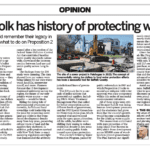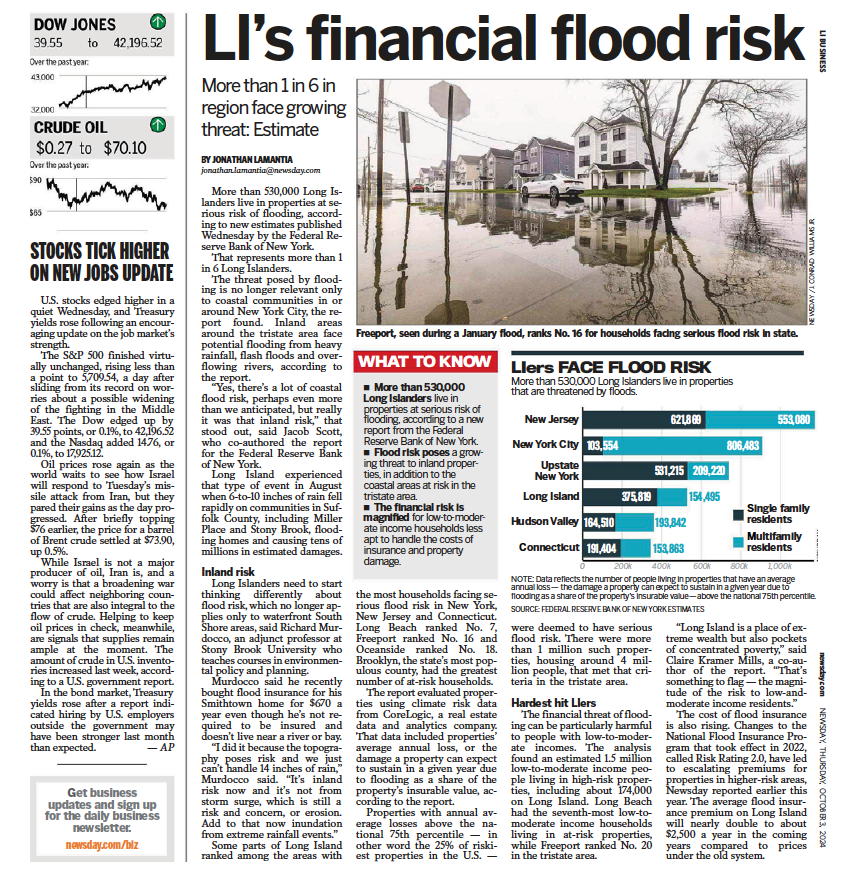Thanks to Karin Caro and her friends at Blu Chip Marketing, I recently appeared on Michael Watt’s web show to have an in-depth discussion of Long Island’s regional issues. The topics included Long Island’s regional economy, the brain drain, housing and more. Much of what was said echoes my views that are published each week in this blog and elsewhere.
Often, when dealing with these issues on a daily basis (or in my case, writing on the issues week in and week out), you get caught up in the milieu and day-to-day complexities. The discussion with Michael helped me realize that it’s important to get back to the basic tenets of discussion, and focus on the fundamentals of our regional challenges. This approach of “back to the basics” should be taken not only by the advocates, stakeholders and government officials that work to shape Nassau and Suffolk counties (for better or worse), but by all Long Islanders. Residents often get so swept up in the emotion of protecting their community that the larger goal is lost. How can we make Long Island better?
Long Island’s environment
In both Nassau and Suffolk counties, our development must effectively harmonize with our natural environment. However, it seems that what was once considered a truism is now being debated. Recently, the Long Island Regional Planning Council and Newsday’s Michael Dobie butted heads on a regional water quality protection bill being floated around. Dobie argued that:
“Among the strangest: the insistence that the science behind setting new nitrogen standards is weak, and that nitrogen is not the principal threat to water. Both claims are absurd.”
The chairman of the LIRPC (an organization that loyal readers may recall, sometimes doesn’t have the foggiest idea what’s going on) fired back in a letter to the editor:
“With 70 percent of Suffolk County unsewered, and pollution abounding in our ground and surface waters, what Long Island should be focused on instead of more regulation is developing strategies to fund sewers, upgrade treatment plants, clean up brownfields and restrict chemical use.”
Dobie’s criticisms are accurate, and the response by the LIRPC is troubling. As an organization, the LIRPC needs to go back to the basics with its approach to regional thought and realize that perhaps having village officials, who are grounded in home rule and protecting their local fiefdoms, aren’t exactly the best fit for a group that is supposed to advance regional thought. The LIRPC’s predecessor once advocated (and implemented) sweeping land-use reforms for the sake of regional aquifer protection, yet they suddenly fear more regulation?
The LIRPC, and others looking to protect Long Island’s environment, must go back to the basics: Land-use on Long Island is dictated by the carrying capacity of our aquifer system. Thus, all development proposals and land-use recommendations should be based upon sound environmental data.
Long Island’s economy
Each day, Long Island faces intense business competition from other parts of the country. The need to diversify our economy became apparent when Northrop Grumman started winding down its operations in the late 1980s, and is even more so with reports that regional employers are laying off hundreds of Long Island-based employees. While progress is slowly being made with each incubator and STEM investment, another retail store is built, slowly eroding our region’s economic competitive edge.
We need to go back to the basics: If we as a region are to grow, we need to make sure our job opportunities match the skill sets of Long Islanders.
Long Island’s social equity
The greatest regional failure on Long Island is the lack of provision of affordable housing. This multifaceted issue is complex, tough to measure and creates vivid flares of emotion, but the bottom line is our housing stock, like our economy, is woefully under diversified. The development of the mobile home park in Amityville showcases a dark side of the development process. What is the tradeoff between what’s considered “progress” within the Town of Babylon’s North Amityville and the 500 or so residents being displaced to make way for new apartments? What can effectively be done about the struggles of Long Island’s poorer school districts, while wealthier districts a mile or two away flourish?
The thin, yet powerful boundaries of Long Island’s school districts are prohibitive to the growth and future success of the region. Similarly, our municipal divisions are preventing the creation of a cohesive approach to tackling our social challenges. These issues must be quantified, understood and dealt with on not a local level, but a regional scale.
Going back to the basics, it’s critical to understand that Long Island’s social equity issues touch upon almost all of our regional challenges. The division and allocation of resources must be properly planned in anticipation of future trends.
It’s easy to get caught up in the day-to-day of policy analysis. Sometimes it’s important to take a step back, think bigger picture and get back to the basics.









